Australian Garden History, the Society’s journal, was first published in 1989. It has continued as it started, striving to maintain a dialogue between professional and amateur interests in the history of gardens, thus showcasing the many aspects of the landscape and its intersection with Australian life.
Media Releases
June 2025 - The importance of trees
March 2025 - Ways of seeing landscape
December 2024 - Garden transmissions
September 2024 - People and plants
July 2024 - Restoring and recording gardens
March 2024 - Lest we forget
December 2023 - Déjà vu: recurring themes in gardens and landscape history
September 2023 - Highlighting design
June 2023 - Celebrating camellias
March 2023 - From Gondwana to mid-20th century modern
January 2023 - The diverse histories of gardens
September 2022 - Knowing our landscape
June 2022 - Collating the past
March 2022 - The flow of ideas
6 January 2022 - Against the odds
20 September 2021 - Being seen to conserve
1 June 2021 - A picture is worth a thousand words
31 March 2021 - Dare to dream
5 January 2021 - Gardens are great
16 September 2020 - How gardens and landscape shape our identity
13 August 2020 - Gardens and their history offer solace during COVID-19
Indices of Journal Articles
The index to Australian Garden History makes it easy to find articles, gardens and other gems contained in volumes 1–20.
Compiled by AGHS member Kirstie McRobert, this comprehensive index covers issues of the Australian Garden History Journal from 1989-2009.
Download:
Australian Garden History Index, Volumes 1–20 — Australian Garden History Society.
For a limited search of online journal extracts, enter a word of interest here ...
Donate to the Nina Crone Writing Fund
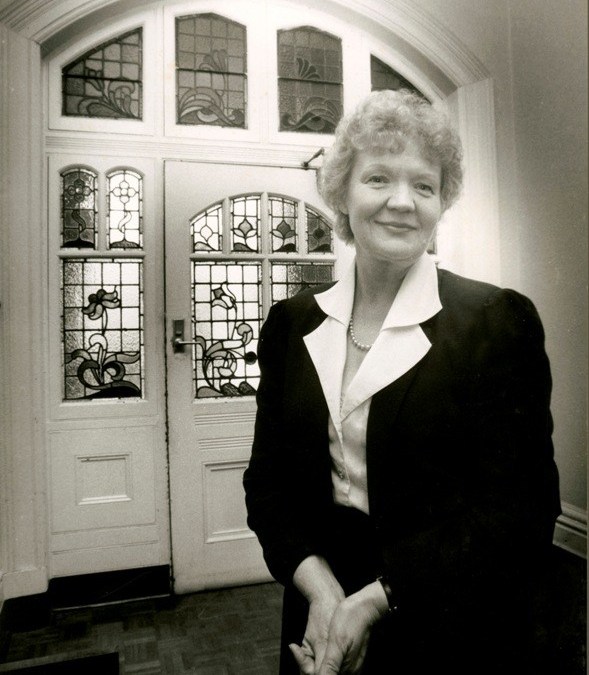 If you would like to encourage new writing talent and promote interest in garden history by donating to the Nina Crone Writing Fund, please click here for details.
If you would like to encourage new writing talent and promote interest in garden history by donating to the Nina Crone Writing Fund, please click here for details.
History of the Journal
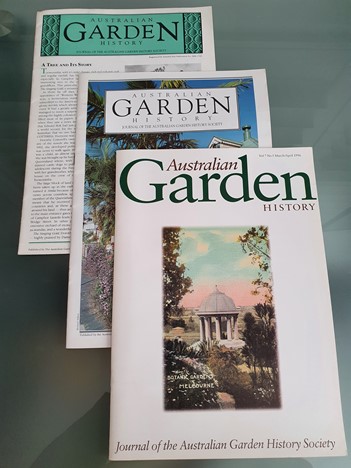 Nancy Clarke, AGHS ACT Monaro Riverina Branch, sets out the history of Australian Garden History in this paper,
Nancy Clarke, AGHS ACT Monaro Riverina Branch, sets out the history of Australian Garden History in this paper,
The Australian Garden History Society journals
Getting Published in the Journal
Guidelines for submission to Australian Garden History Journal
Copy deadlines for article submission to Australian Garden History Journal
| January issue | end of October |
|---|---|
| April issue | end of January |
| July issue | end of April |
| October issue | end of July |
Authors: please note that planning for future issues takes place well before these deadlines. You are advised to contact the editor as early as possible about your intention to submit.
Advertise in the Journal

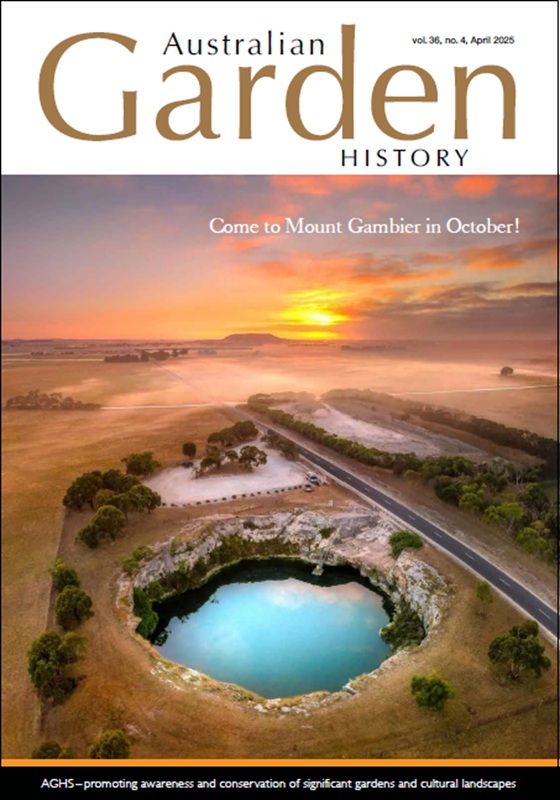
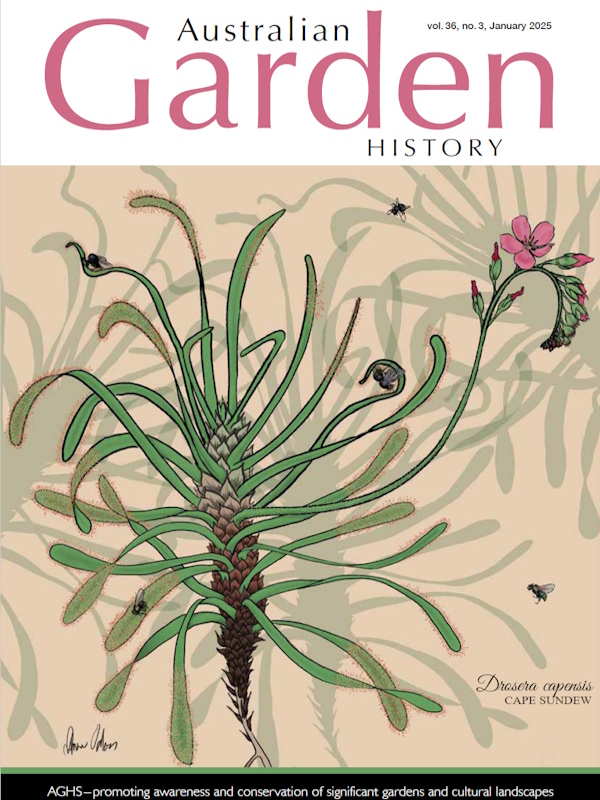
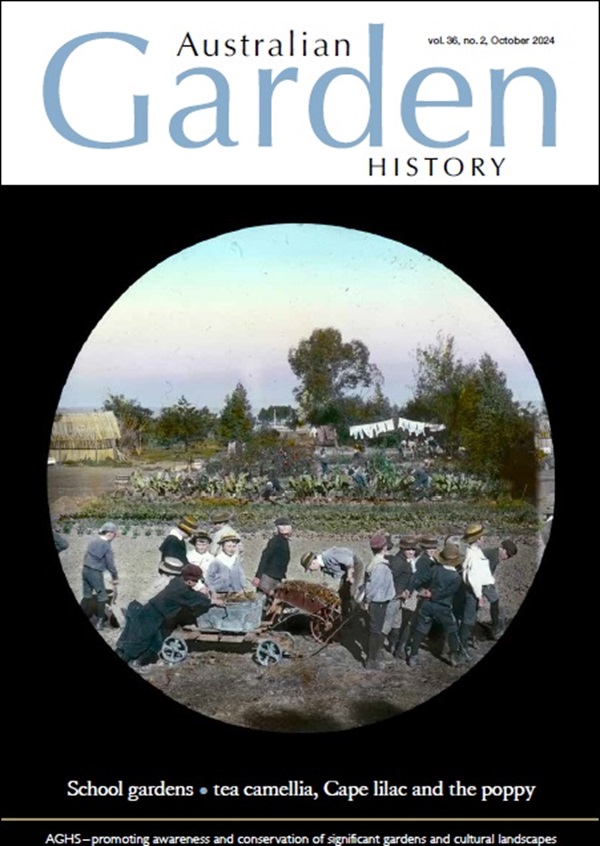
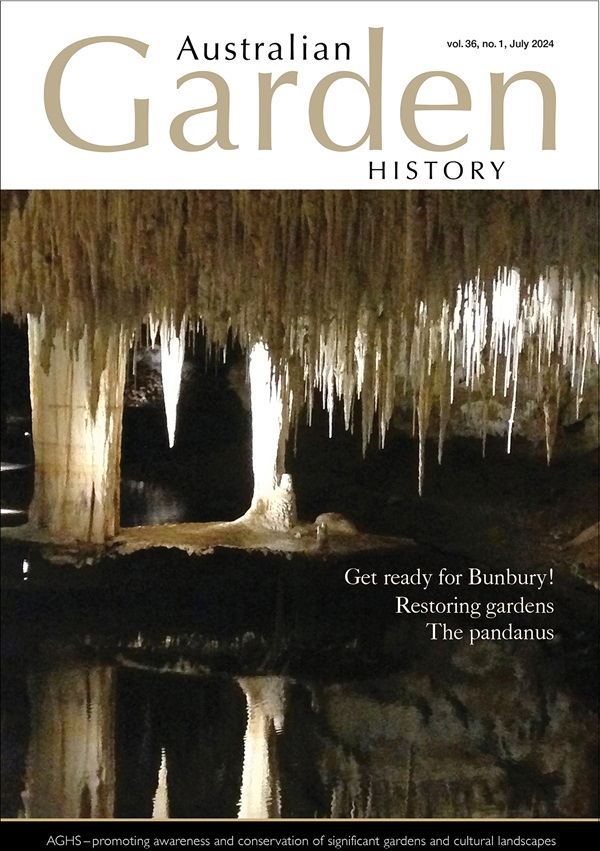
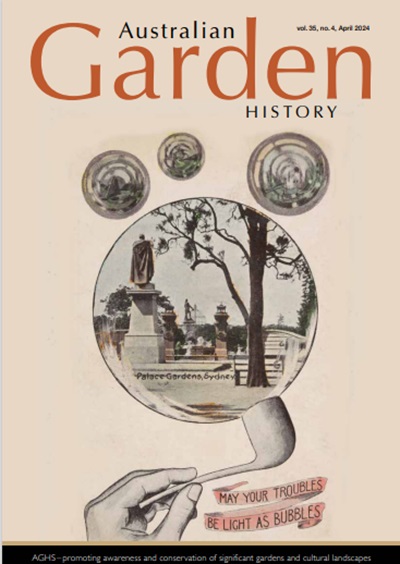
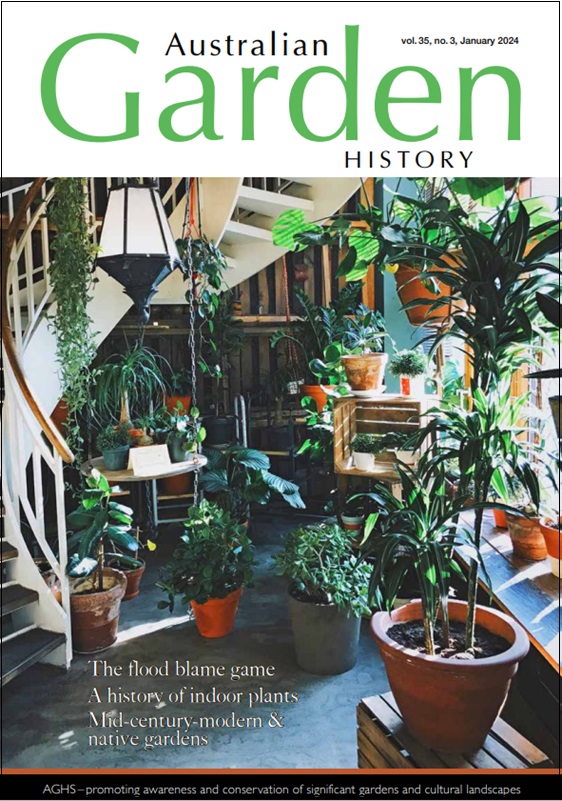
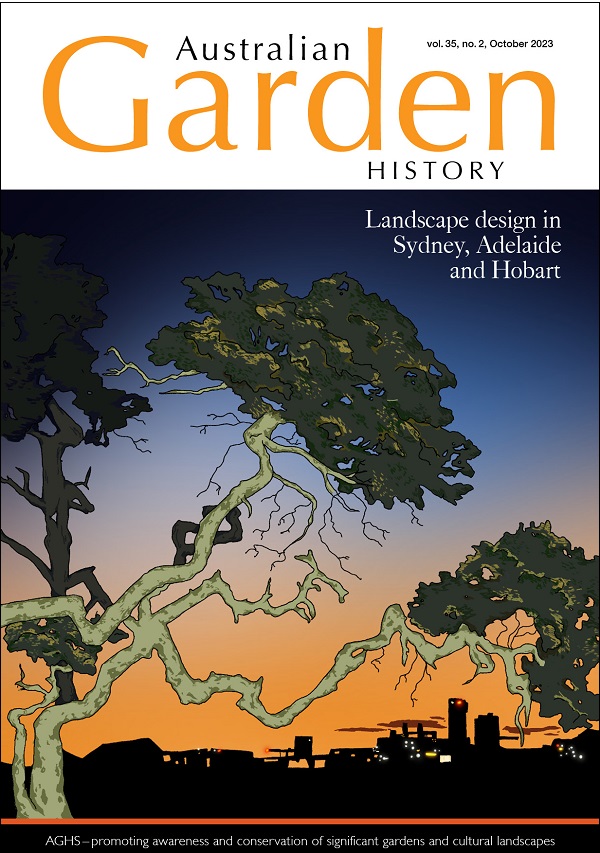
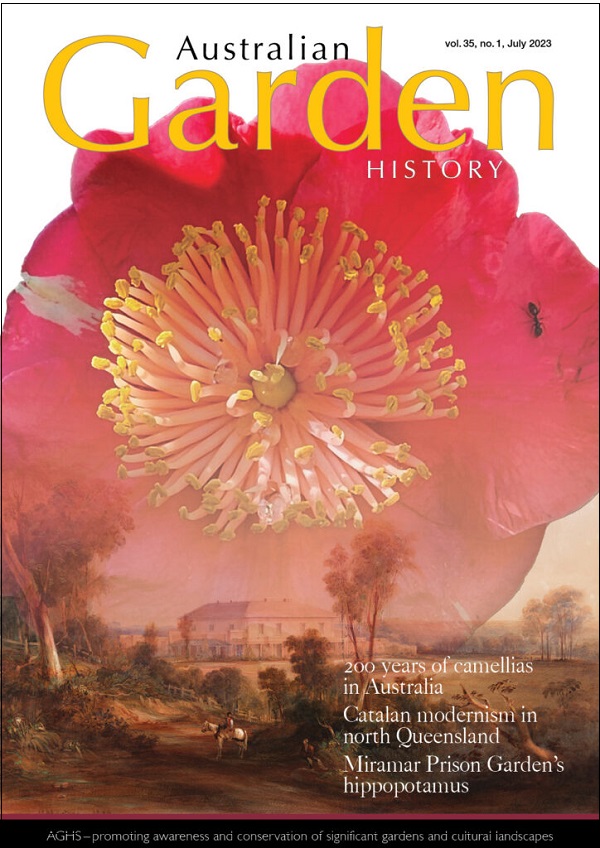
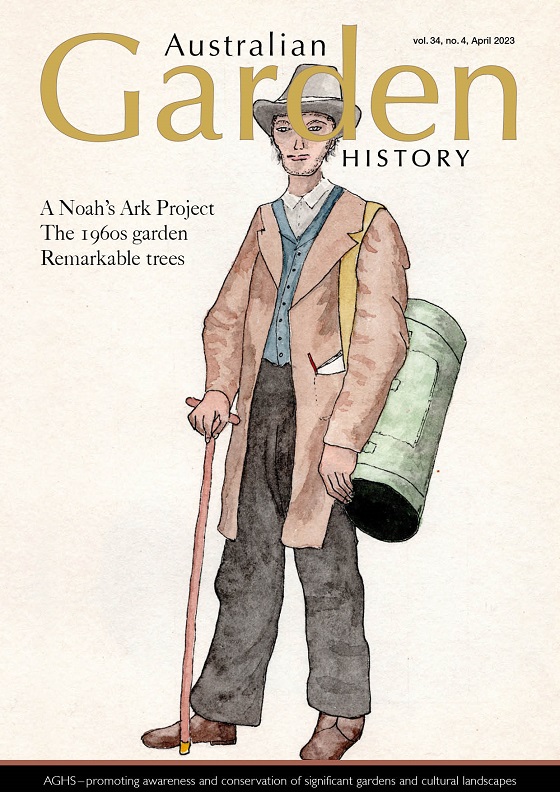
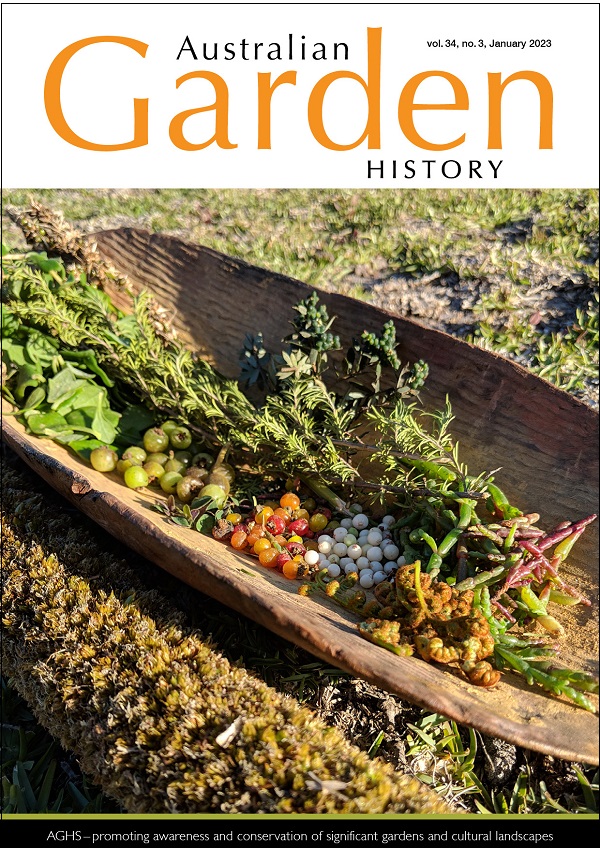
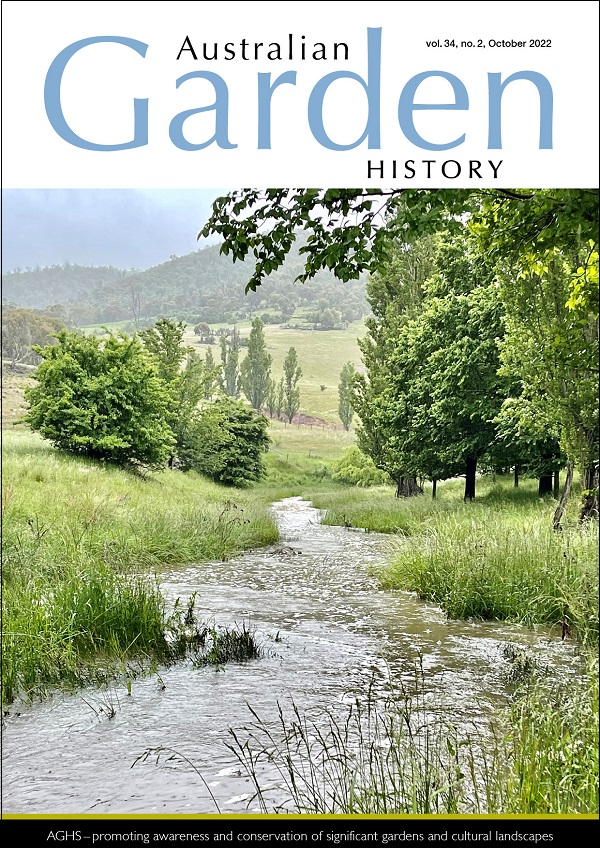
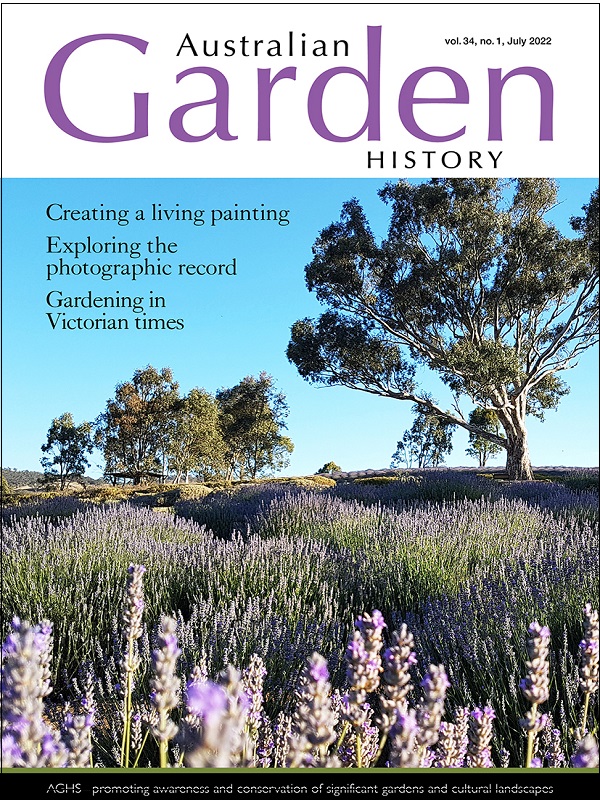
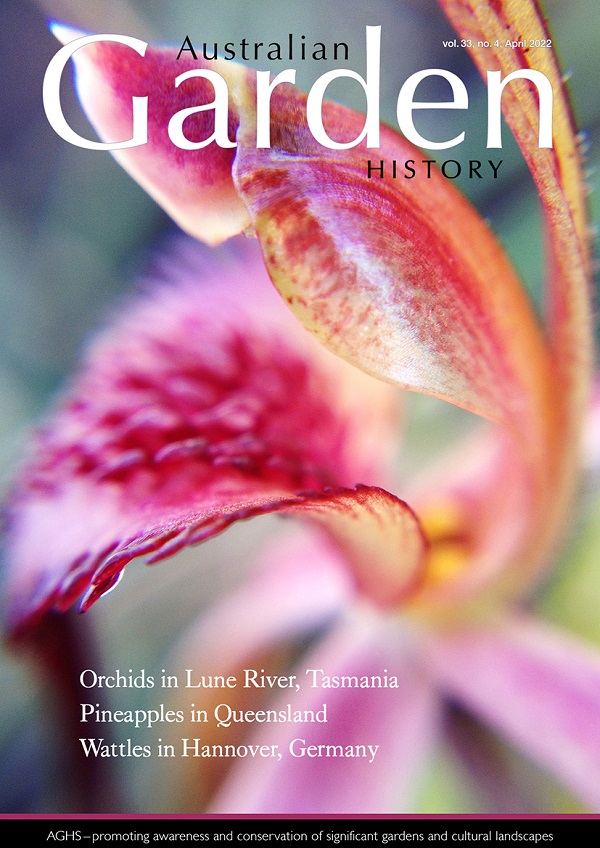
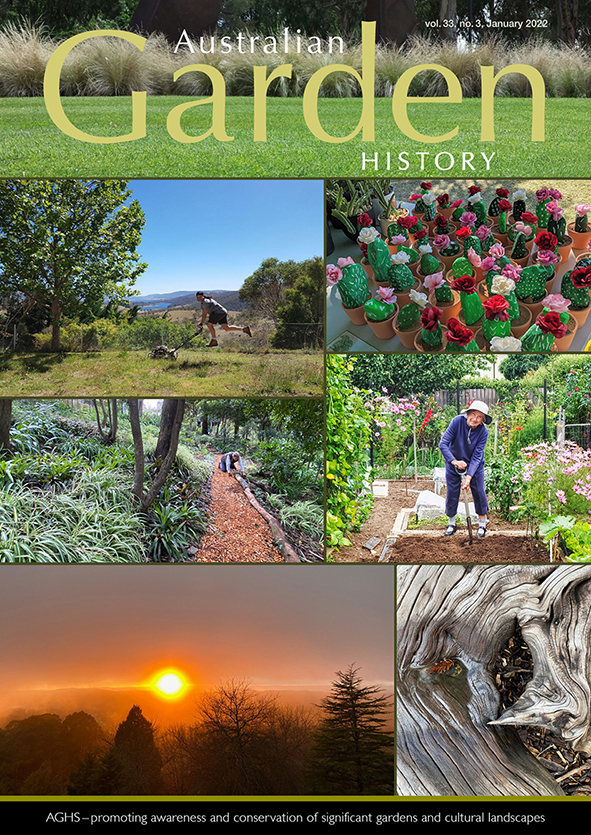
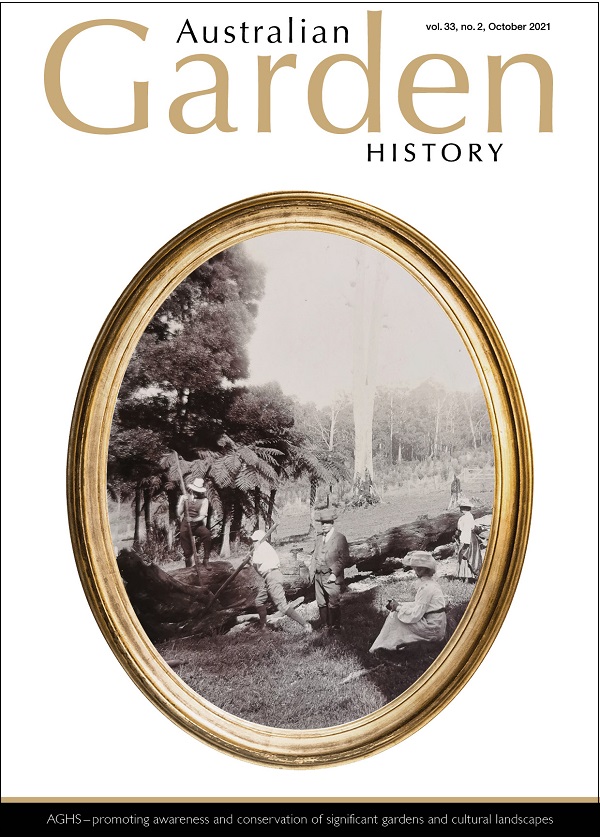
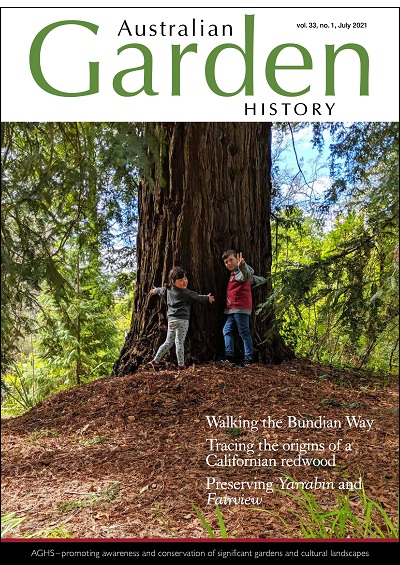
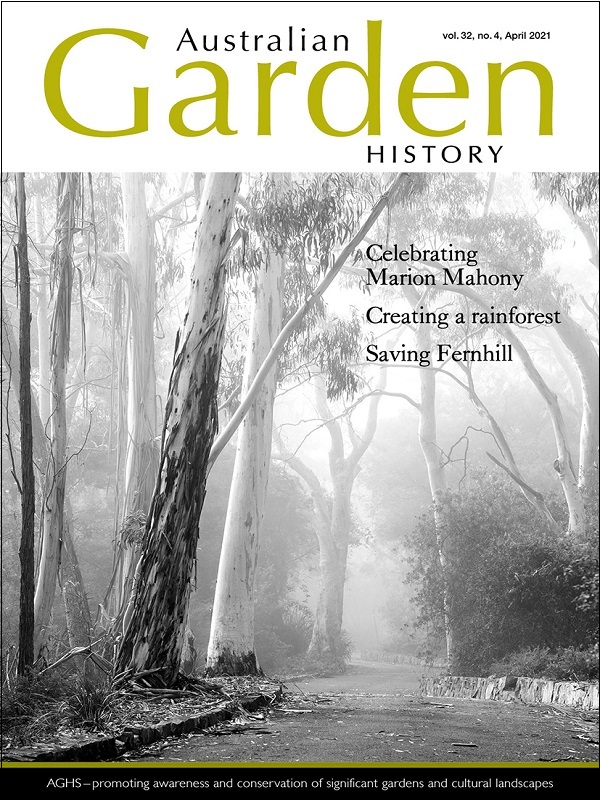
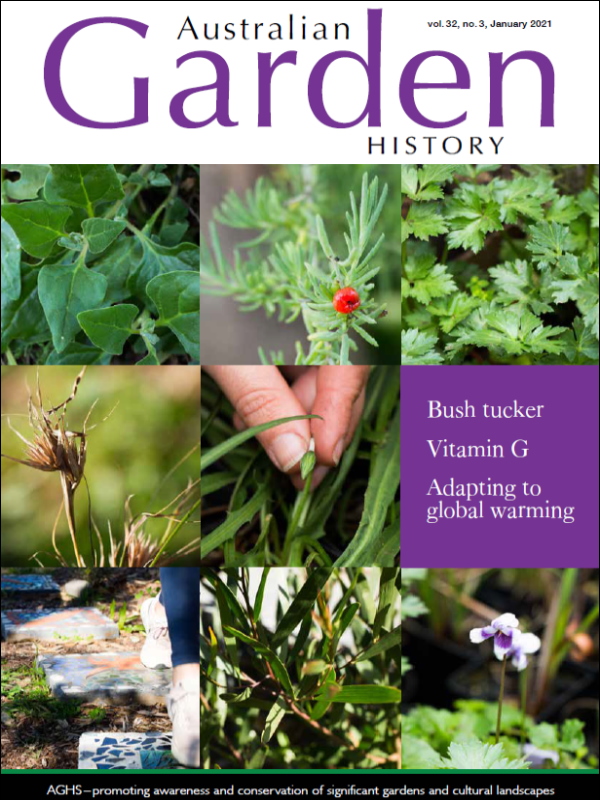
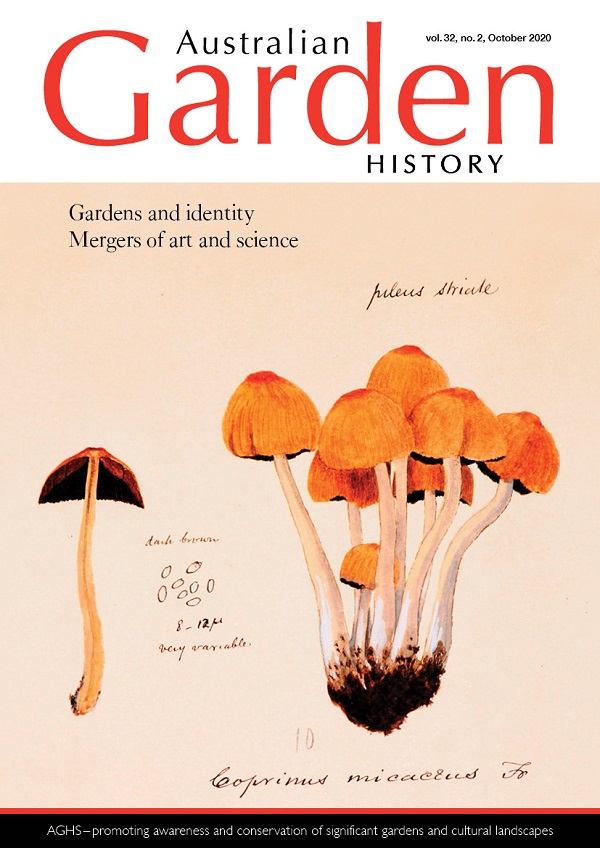
This Season
AGH Vol. 37 No. 1 July 2025
Contents
A portfolio of trees: thirty years of landscape practice Sharon Wright
‘The Girl Who Planted a Tree’ is a tale that wends through 30 years of my landscape architectural practice. Its focus on trees and tree planting was a way of questioning some of the recurring ideas and ambitions within my practice. ‘While writing this story, it occurred to me that you could say I have nurtured a portfolio of trees.
Plane trees: shade trees since ancient times under threat from climate change John Dwyer
The plane tree we are familiar with in Australia is mostly not the oriental plane but the London plane (Platanus x acerifolia). Plane trees face an uncertain future as street trees due to climate change and the fact that the hairy seeds of plane trees cause hay fever.
Whalebones reused as a garden arch Jeff Jenkinson
A whalebone arch in the wooden palisade garden perimeter fence with a galvanised iron top remained for many years at the entrance of the Rosebrook Garden, SA.
A grand colonial vista – with a few twists: Dale’s panorama and its accompanying pamphlet Malcolm Traill
Early colonial artwork in Australia can tell us a lot about landscape, botany and colonial attitudes. This is very much the case with this painting of King George’s Sound (now Albany) in Western Australia, informally known as the Dale Panorama. So, what is the background to this huge work, almost 3 m in length, and why was it painted? Who was Robert Dale and what became of him?
Threading the jewels: the ‘Green Necklace’ parklands of Sydney’s western harbour Christine Hay
Landscapes are underrepresented on the NSW State Heritage Register (SHR, but this is changing. In 2015, the Australian Institute of Landscape Architects (AILA) received funding from the then Office of Environment and Heritage to support a study to inform the Heritage Council’s understanding of significant landscapes. The grant required 10 nominations for state heritage listing. Now in 2025 momentum is building with four listings from the 10 nominations achieved and another two in progress. The study has raised awareness, particularly within government agencies, but also the community, about the recognition, assessment and conservation of significant cultural landscapes. State recognition of Sydney’s ‘Green Necklace’ landscapes is delightfully close at hand.
Heralding the Australian Museum of Gardening Lynne Walker
An interview with Susan McCormack, Director of Carrick Hill, which is believed to be Australia’s most intact period mansion. Built in 1939, it houses a large art collection. Soon it will also be home to the Australian Museum of Gardening.
For the bookshelf: The Redouté brothers: masters of scientific illustration in Paris by Hans Walter Lack, James A Compton and Martin W Callmander. Reviewed by Alex George
The book is an account of the brothers Antoine‑Ferdinand, Pierre-Joseph and Henri‑Joseph Redouté, whose lives spanned the years 1756 to 1852. A masterpiece.
For the bookshelf: The Land Is Full. Essays by Thomas L Woltz, Nina-Marie Lister, Brent Leggs, Robert Pogue Harrison, with a foreword by Andrea Wulf. Reviewed by Ben Hardy-Clements
The Land is Full gives us a vision of landscape architecture as it should be: deliberate, embedded and ethical.
Profile: Eleanor Dartnell
Eleanor Dartnell, a member of the National Management Committee and and Marketing and Membership Subcommittee gives a glimpse of her gardening journey from Perth to a new garden just over half a hectare in New South Wales.
Beetle alert – ruiner of trees: polyphagous shothole borer Caroline Grant
A tiny beetle, the polyphagous shothole borer (Euwallacea fornicatus), only the size of a sesame seed can utterly change our cities, and even our food supply. Coastal areas around the country have a climate that particularly suits the beetle. We all need to be vigilant.
Heritage skills: cultivating tradition, nurturing the future Yolanda Cool
Every moment spent beside timeworn tools observing ancient techniques is an opportunity to rediscover traditions that have sustained gardens across generations. Whether it’s the delicate art of grafting century-old fruit trees, the meticulous care taken to hand-prune heritage roses or the understated wisdom behind natural pest control, these skills bring layers of meaning and memory to our green spaces.
AGHS national oral history collection: Kathy Wright
a brief profile of AGHS member Kathy Wright drawn from an interview recorded for the AGHS national oral history collection

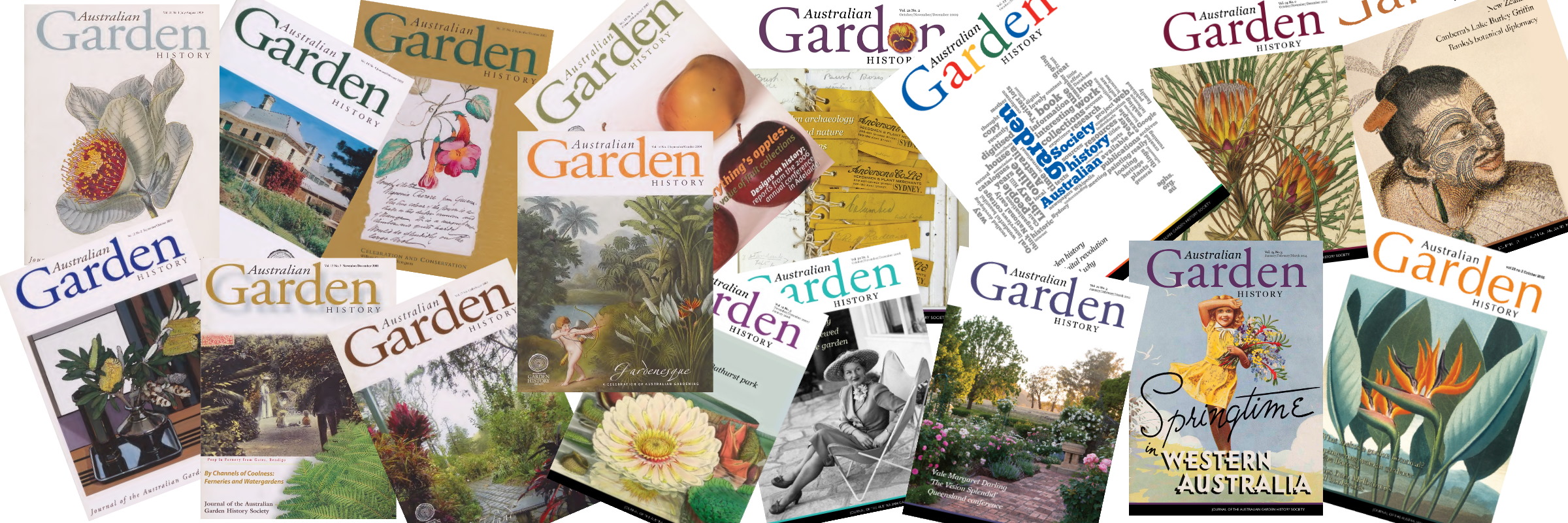
Leave a Reply
You must be logged in as a member to post a comment.